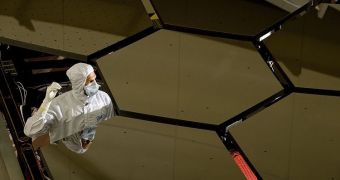The US Senate's version of the 2012 budget leaves NASA with 2.5 percent less money than the 2011 levels, therefore forcing the agency to make do with its lowest level of funding since 2009. But the newly-approved document also contains some good news for the organization.
The Senate Appropriations Committee approved the new spending bill on September 15. According to the proposal, the James Webb Space Telescope (JWST) will continue to receive funding, even beyond what the American space agency originally demanded for it for 2012.
According to the Senate, NASA should receive $17.9 billion for 2012, a level of funding that is $510 million below 2011 levels. But this proposed 2012 Commerce Justice Science Appropriations bill still needs a Congressional vote, and also to be reconciled with the House version of the same document.
These new levels of funding are about $1 billion above what the House is proposing, plus they allow the agency to continue building the world's largest and most complex space telescope. The House has recently proposed that the observatory be canceled.
However, the move was justified more by teaching NASA a lesson in management, rather than sound scientific reasoning, and the US Senate managed to interpret this move correctly. Plus, the scientific community and many laymen wrote to their representatives, demanding the project to continue.
The mission is expected to cost a total of $8 billion. JWST is currently scheduled to launch in 2018. Considering that the recently-finished Mars Science Laboratory (MSL) over Curiosity needed $2.5 billion to complete, an $8 billion figure is justifiable for the telescope's potential scientific return.
One of the reasons why the project got in such a state of delay and cost overruns in the first place was that poor management failed to take advantage of every option, and did not minimize costs.
“We’ve gone beyond frugality. We are now into austerity. This means NASA will once again be asked to do more with less,” Senate Appropriations commerce, justice, science committee chairman Sen. Barbara Mikulski (D.-Md.) told the full committee.
She drafted the new proposal with Sen. Kay Bailey Hutchison (R.-Tx.). Their bill funds the development of the JWST with $530 million for 2012, while drawing about $400 million from the $1 billion NASA requested for the Space Technology program
For next year, the Space Launch System (SLS) project will receive about $1.8 billion, whereas the development of the Orion Multi-Purpose Crew Vehicle (MPCV) will be supported with $1.2 billion.
For commercial crew development, NASA would be awarded $500 million in 2012, a figure that is in tune with the levels decided upon by Congress in the 2010 NASA Authorization Act. Of these funds, $300 million would be unlocked immediately, while $200 million will follow when work begins on the SLS, Space reports.

 14 DAY TRIAL //
14 DAY TRIAL //